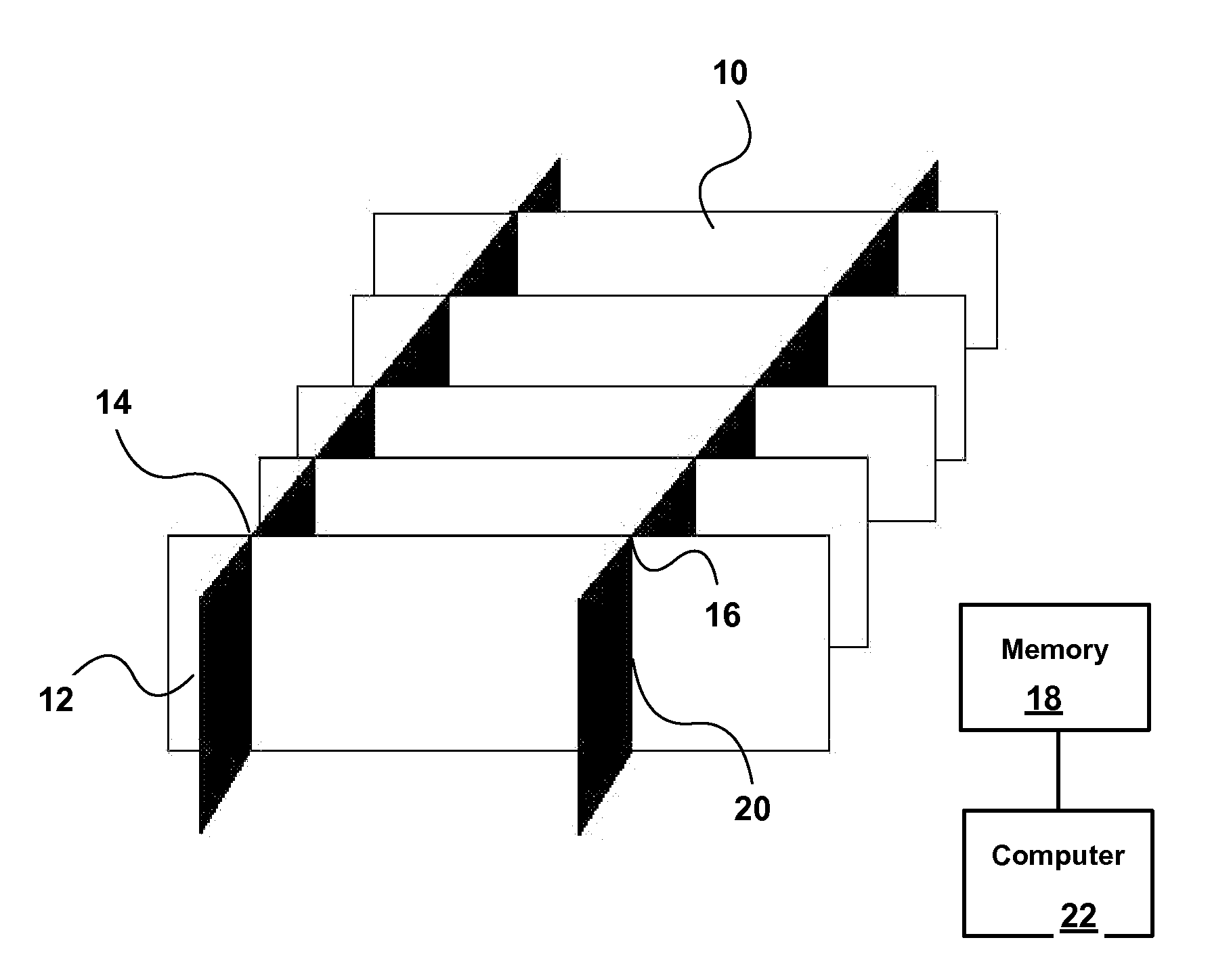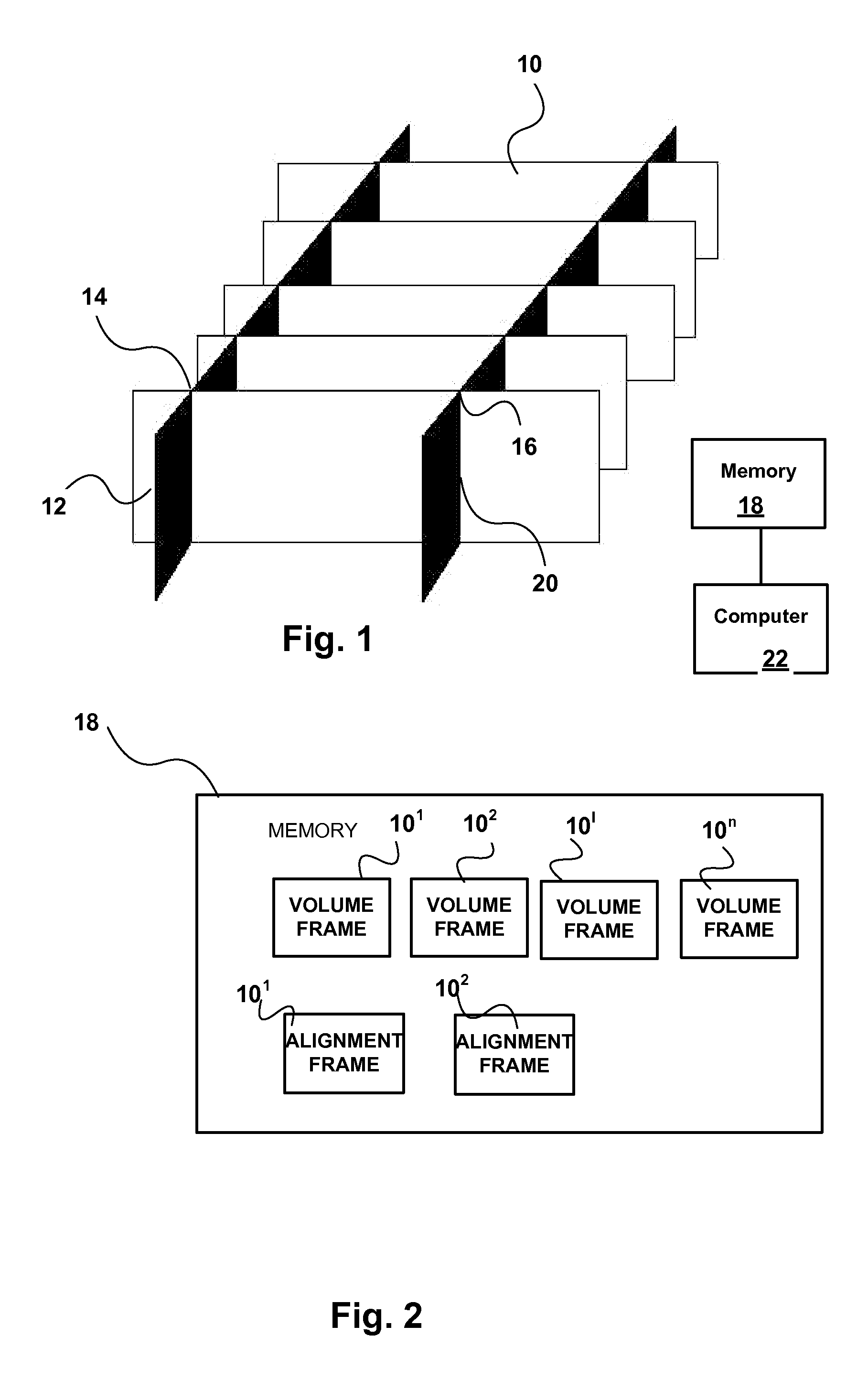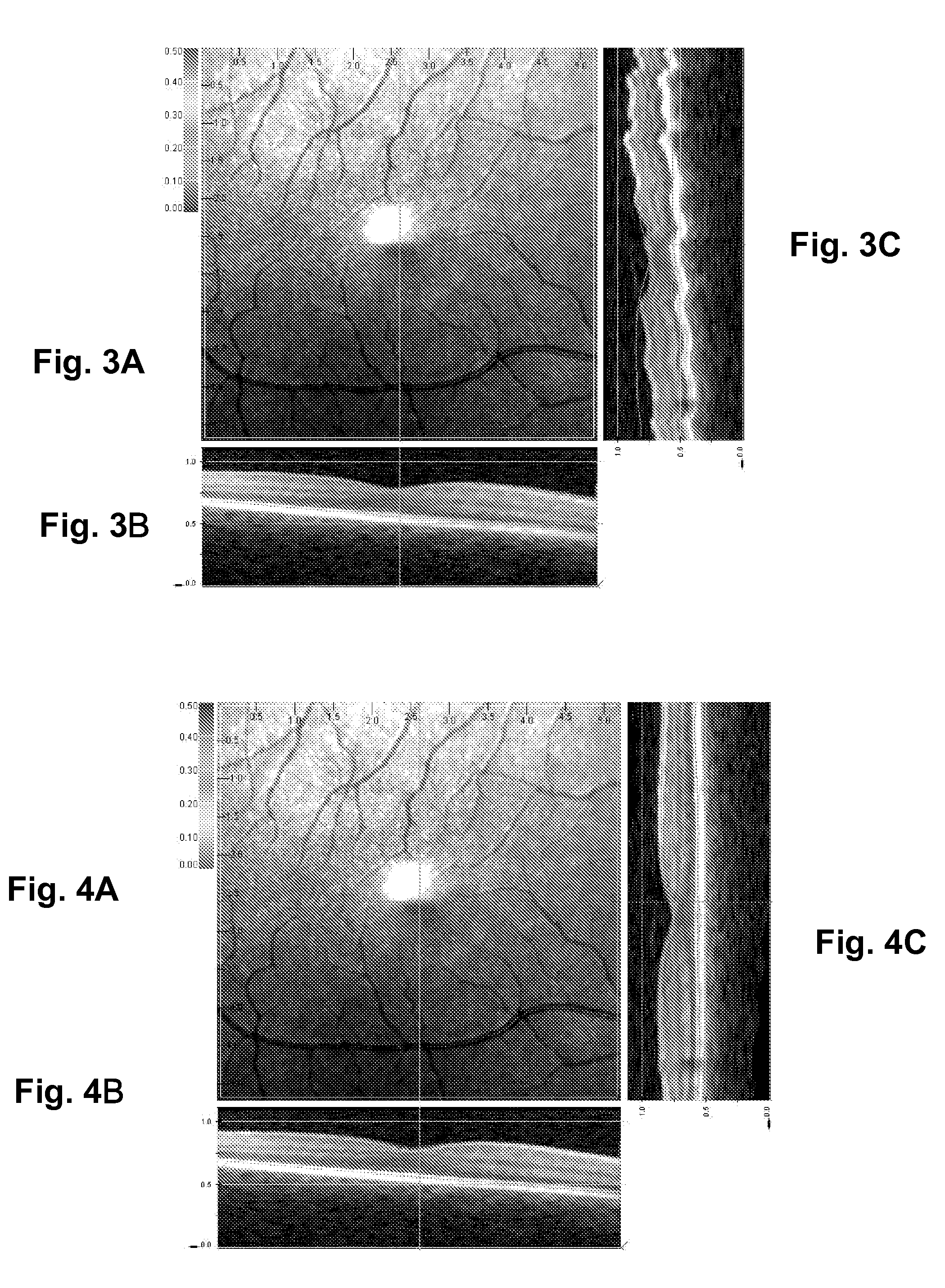Method for correcting patient motion when obtaining retina volume using optical coherence tomography
a technology of optical coherence tomography and patient motion, applied in image enhancement, medical/anatomical pattern recognition, instruments, etc., can solve the problem that the method only corrects vertical motion on a b scan, and achieve the effect of eliminating motion artifacts
- Summary
- Abstract
- Description
- Claims
- Application Information
AI Technical Summary
Benefits of technology
Problems solved by technology
Method used
Image
Examples
example
[0026]The following is an algorithm for motion correcting frames assuming that the alignment frames are from ⅓ and ⅔ or the way across each volume frame. The algorithm can be implemented in computer 22.
[0027]The use of 10 column wide sections of image is arbitrary here; any value from 1 to half of the image width could be used:
For each volume frame{ extract 10 columns from the volume frame at ⅓ of it's width smooth the 10 column wide image collapse the 10 column wide image into 1 column extract 10 columns from the ⅓ alignment frame at the relativeposition the above frame is from smooth the 10 column wide image collapse the 10 column wide image into 1 column use statistical methods to determine the best fit for the two images. extract 10 columns from the volume frame at ⅔ of its width smooth the 10 column wide image collapse the 10 column wide image into 1 column extract 10 columns from the ⅔ alignment frame at the relativeposition the above frame is from smooth the 10 column wide im...
PUM
 Login to View More
Login to View More Abstract
Description
Claims
Application Information
 Login to View More
Login to View More - R&D
- Intellectual Property
- Life Sciences
- Materials
- Tech Scout
- Unparalleled Data Quality
- Higher Quality Content
- 60% Fewer Hallucinations
Browse by: Latest US Patents, China's latest patents, Technical Efficacy Thesaurus, Application Domain, Technology Topic, Popular Technical Reports.
© 2025 PatSnap. All rights reserved.Legal|Privacy policy|Modern Slavery Act Transparency Statement|Sitemap|About US| Contact US: help@patsnap.com



